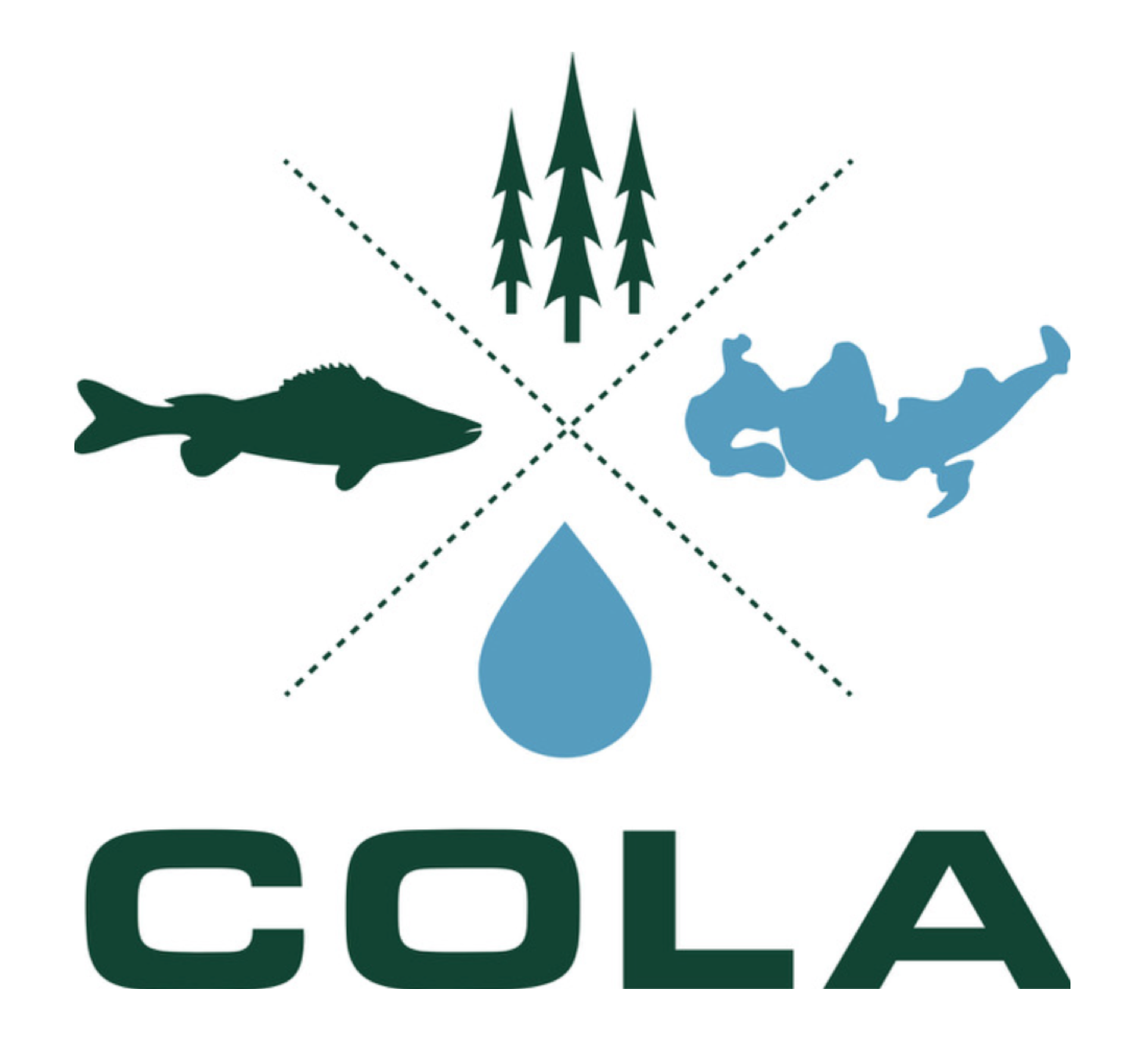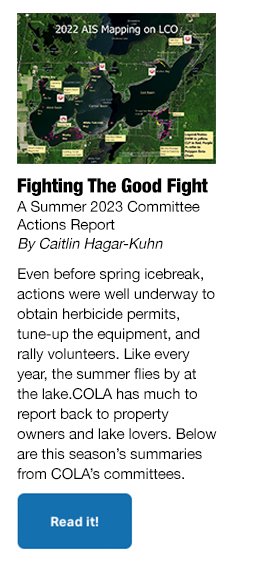For the memories, fun, friends and peace of this unique, beautiful and fragile body of water.
We protect Lac Courte Oreilles and Little Lac Courte Oreilles through research, restoration, and outreach, so you can enjoy them every day and for generations to come. However, our beloved lakes are in serious trouble.
Without all of our help, our enjoyment of the lakes will be seriously impaired. Invasive species, excessive phosphorous levels, impaired water quality and shoreline development all threaten the beauty, recreational activities, and property values. Each of these threats is detailed below, and what COLA is doing to protect the lake we love.
What’s happening now.
Sign up for our mailing list here.
Threats we face
Eurasian watermilfoil can make boat navigation difficult and harm fishing.
Invasive species
Invasive aquatic plant species are nearly impossible to eradicate once introduced to lakes and streams. Two invasive species are now firmly established in the LCO lakes, curly-leaf pondweed and Eurasian watermilfoil. They were probably brought to LCO by boats from infested lakes, and their exuberant growth has been fueled by excessive phosphorus concentrations in LCO’s water. Unfortunately, both invasive species are easily distributed throughout the LCO lakes by plant fragments scattered by boat traffic. These invasives grow rapidly to form large mats that limit boat navigation and alter the fishery habitat. Late in the season, the invasive plants die back, settle to the lake bottom and decompose, which adds phosphorus and depresses dissolved oxygen concentrations, further harming the fishery. Of the two invasives, Eurasian watermilfoil is the real beast. It increased rapidly since it was first noticed 2015 and is now distributed throughout both LCO lakes. Despite COLA’s best efforts, its spread is accelerating. READ MORE>
Excessive nutrients caused by phosphorus draining from cranberry operation into West Basin.
Phosphorus and water-quality impairment
Nearly all the challenges facing the LCO lakes relate directly to deteriorating water quality caused by excessive nutrients, especially phosphorus, which has increased dramatically over the last several decades. All parts of the 73,000+ acre Upper Couderay River watershed, including agriculture, forestry, and private and public lands, contribute to the problem through uncontrolled drainage, runoff, and erosion. Lac Courte Oreilles is at the base of the watershed, so it bears the burden of all the mismanagement upstream as well as that on its own shores. Of particular concern are the cranberry operations on LCO’s shores that are responsible for a significant proportion of the readily-controllable phosphorus flowing into LCO, but they lack motivation to do much about it. READ MORE>
Protecting LCO’s shoreline is a community-wide responsibility.
Degraded, eroded shoreline
Native shrubs and other traditional vegetation hold the upland soil in place and prevent runoff. In many areas, LCO’s shoreline has been eroded by irresponsible boating practices and poor shoreland management. Most property owners and visitors care about and are protective of the LCO lakes, but we need to do more. High-powered boats with large wakes come too close to shore. Many properties have manicured and fertilized lawns that extend to the water’s edge. Sawyer County zoning regulations on building setbacks, impervious surfaces, and shoreline access are often ignored. READ MORE>
Loss of LCO’s two-story, cold-water fishery
LCO’s two-story, cold-water fishery is near collapse. Musky habitat is much reduced and threatened. Since 2013, perhaps earlier, there has not been season-long suitable habitat for cisco and lake whitefish. Water temperatures have been too high and dissolved oxygen concentrations too low to sustain these species, which are part of the ecosystem that once supported a renowned and sustainable musky population. While warm water temperature is mostly the result of global climate change, low dissolved oxygen is caused by locally controllable factors. The profusion of invasive aquatic plant species fueled by excessive phosphorus is the most likely culprit. READ MORE>































